Who Is My Self?
Who Is My Self?
A Guide to Buddhist Meditation

The Pohapda Sutta
The Buddhas Words on Self and Consciousness
Interpreted and Explained
by
AYYA KHEMA

WISDOM PUBLICATIONS BOSTON
Wisdom Publications
199 Elm Street
Somerville, Massachusetts 02144 USA
www.wisdompubs.org
Ayya Khema 1997
All rights reserved.
No part of this book may be reproduced in any form or by any means, electronic or mechanical, including photography, recording, or by any information storage and retrieval system or technologies now known or later developed, without permission in writing from the publisher.
Library of Congress Cataloging-in-Publication Data
Khema, Ayya.
Who is me is unconscious.r sit downy self? : a guide to Buddhist meditation / Ayya Khema.p. cm.ISBN 0-86171-127-0 (alk. paper)1. Tipiaka. Suttapiaka. Dghanikya. PohapdasuttaCriticism, interpretation, etc. 2. MeditationBuddhism.I. Title.BQ1300.P685K54 1997294.3'823DC21 972606
ISBN 0-86171-127-0
13 12 11 10 09
8 7 6 5
Designed by L.J.Sawlit & Adie Russell.
Wisdom Publications books are printed on acid-free paper and meet the guidelines for the permanence and durability of the Committee on Production Guidelines for Book Longevity of the Council on Library Resources.
 This book was produced with environmental mindfulness. We have elected to print this title on 30% PCW recycled paper. As a result, we have saved the following resources: 6 trees, 4 million BTUs of energy, 568 lbs. of greenhouse gases, 2,356 gallons of water, and 303 lbs. of solid waste. For more information, please visit our website, www.wisdompubs.org. This paper is also FSC certified. For more information, please visit
This book was produced with environmental mindfulness. We have elected to print this title on 30% PCW recycled paper. As a result, we have saved the following resources: 6 trees, 4 million BTUs of energy, 568 lbs. of greenhouse gases, 2,356 gallons of water, and 303 lbs. of solid waste. For more information, please visit our website, www.wisdompubs.org. This paper is also FSC certified. For more information, please visit

Contents

It seems we have come to a time in the history of humankind when more and more people are searching for lifes meaning. In the past, family life, religion, political affiliations, and/or specific occupations were thought to be sufficient to satisfy human yearning for fulfillment. Although this longing is mostly unacknowledged and seldom verbalized, it exists in the heart of every person.
Today many of the former preoccupations, while still being used, no longer provide a firm basis for a meaningful life. However, if we think that twentieth-century humanity is unique in this search for meaning, we will soon know otherwise when we read the Buddhas discourse on the following pages.
Here a wanderer named Pohapda asks the Buddha innumerable questions about Self and Consciousness, and the Buddha patiently and painstakingly answers him with exact guidelines for establishing himself on the spiritual path and reaching final perfection. This took place two thousand five hundred years ago, but is just as pertinent for us today as it was then.
We will also find that friends and companions of Pohapda are not in agreement with this new way of thinking and try to persuade him to relinquish his interest in the Buddhas teaching. This too is not unknown in our day and age.
I hope that, with the explanations and interpretations given, the Discourse will come to life for the reader and will help to show the direction in which lifes meaning can be foundnamely, in our spiritual evolution. Anyone who finds inner peace, happiness, and fulfillment contributes to the peace and happiness of the world.

This book contains the taped talks given during a three-week meditation course held at the Land of Medicine Buddha in Soquel, California, during May and June 1994.
Due to the kindness, generosity, and commitment of Gail Gokey and Alicia Yerburgh, we now have the text before us that can serve as a support for practice.
I am personally deeply grateful to Gail and Alicia for this work done with love, and to Toni Stevens, who organized and managed the retreat with great skill. My gratitude also goes to Traudel Reiss, whose computer expertise made all corrections possible.
Wisdom Publications, under the able guidance of Tim McNeill, provides a wonderful outlet for the Buddhas teaching, and I am happy to be numbered among their authors.
If those who read this book gain more faith in the Buddhas teaching, more love for the practice, or more insight into absolute truth, all of us who worked on this book will feel immensely gratified, as well as encouraged to give our time and love again in a similar way.
May this book be a companion in the search for humanitys highest potential, which all of us carry within as the seed of enlightenment.
May the Dhamma live in many hearts.

In the Theravdan tradition, we use the Pali Canon as our foundation for the words of the Buddha. Pali was the language spoken by the Buddha and is a derivative of Sanskrit. The difference between the two is similar to the difference between Latin and Italian. Sanskrit was spoken by learned scholars, and Pali, or a dialect akin to it, was spoken by ordinary folk. This teaching is grounded in a tradition that is two thousand five hundred years old.
The Pali Canon is also called the Tipiaka. Ti means three and piaka means basket. The Three Baskets are the Vinaya, the rules and discipline for monks and nuns; the Suttas, the Buddhas discourses; and the Abhidhamma, the higher philosophy of the teaching. The reason for the name is that the Tipiaka was first written down on dried banana palm, or ola leaves. When dried, they become brittle but are still reasonably solid. Using a stylo, which resembles a screwdriver with a very fine point, the letters of the text were scratched into the ola leaves. Then the juice of a particular kind of berry was rubbed over the leaf and the excess removed; the dark indentation of the letters remained. This same process is still used in Sri Lanka to this day, where a certain monastery always keeps a set of the entire Tipiaka, handwritten on ola leaves. The monks repeatedly copy the texts from old leaves onto new ones, as the old ones decay. The leaves are held together with a heavy wood binding at top and bottom, and the parts are laced together. Should there be a donor, the wooden top-piece is often decorated with gold or silver in honor of the Buddhas words. These are not books as we know them and cannot be carried in ones hand or under the arm. Originally they were put into three baskets which were then carried around. This is how the Pali Canon was named the Tipiaka, or Three Baskets.
Throughout this book we shall be using an excellent English translation of the Long Discourses of the Buddha, the Digha Nikya . Nikdya means collection and digha means long. Many years after his death, the Buddhas discourses were divided into five collections: the Majjhima Nikya, Medium-Length Sayings; the Digha Nikya, the Long Collection; the Anguttara Nikya, aem; margin-left:1em; text-indent:-1em; margin-bottom:0em; text-align:justify; } . w w desire numerical assembly; the Samyutta Nikya, a thematic collection; and the Khuddaka Nikya, which contains everything that did not fit into the first four. These divisions were established simply as an aid to memory.
One reason why the Digha Nikya is particularly interesting is that it contains suttas that give us the complete way of practice. We must remember that the Buddha taught on two levels: that of relative truth and that of absolute truth. When we first come into contact with the teachings, we have no idea what absolute truth is, and when we encounter some part of it, our minds boggle at it. Whatever questions we may ask will not be pertinent because we ask them on the level of relative truth and might have to be answered on the level of absolute truth. For example, we may have heard a Zen koan and thought, What could that possibly mean? Its nonsense. But a koan can only be grasped from the standpoint of absolute truth. With that in mind, the meaning is always the samethat there is nothing and nobody there. We can also compare the two levels to the way we speak of familiar objects, such as a table or chair, and the way a physicist might describe them. To us these are pieces of furniture we can use. To the physicist they do not exist as such because the physicist knows they are only particles of matter and energy. Yet that same physicist will go home after work and sit down in a chair and use a table. When the Buddha teaches that there is nothing and nobody there, he is speaking on the level of absolute truth. On that level, our everyday world is an optical and mental illusion. That is the absolute truth. But the Buddha also taught on the relative level. He used words and concepts such as I, me, mine, you. He talked about all the things that concern us, such as karma, the purification of mind and emotions, and mind and body as we know them. We always need to remember that these two very different levels never operate together.
Next page

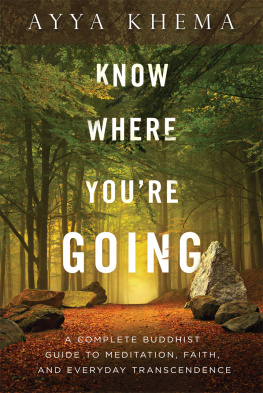
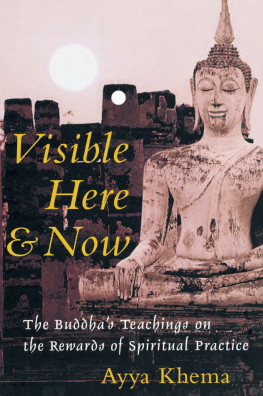
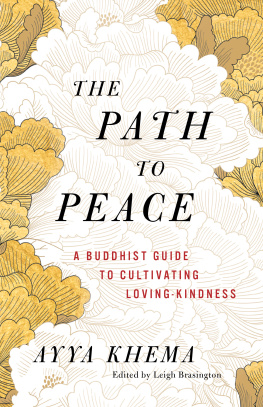
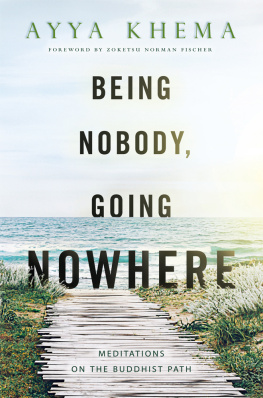


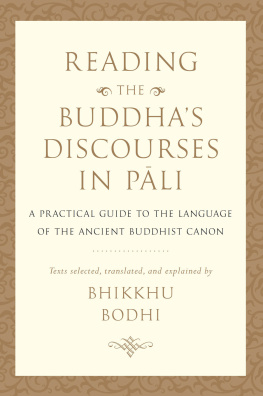
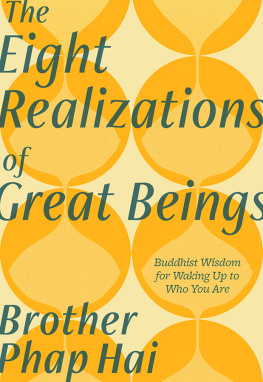
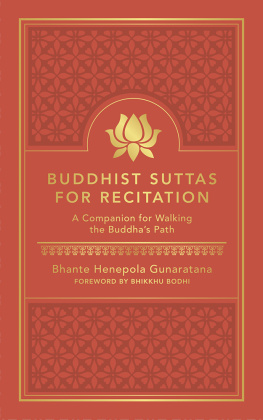
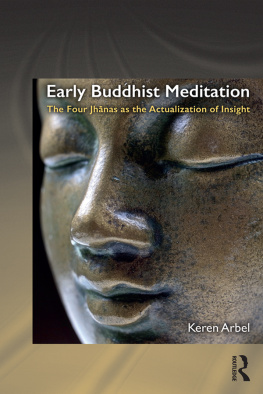
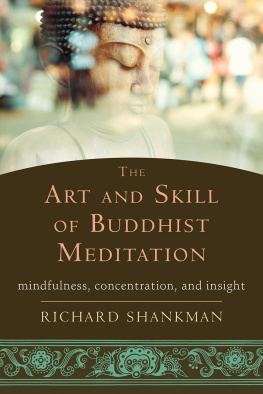


 This book was produced with environmental mindfulness. We have elected to print this title on 30% PCW recycled paper. As a result, we have saved the following resources: 6 trees, 4 million BTUs of energy, 568 lbs. of greenhouse gases, 2,356 gallons of water, and 303 lbs. of solid waste. For more information, please visit our website, www.wisdompubs.org. This paper is also FSC certified. For more information, please visit
This book was produced with environmental mindfulness. We have elected to print this title on 30% PCW recycled paper. As a result, we have saved the following resources: 6 trees, 4 million BTUs of energy, 568 lbs. of greenhouse gases, 2,356 gallons of water, and 303 lbs. of solid waste. For more information, please visit our website, www.wisdompubs.org. This paper is also FSC certified. For more information, please visit